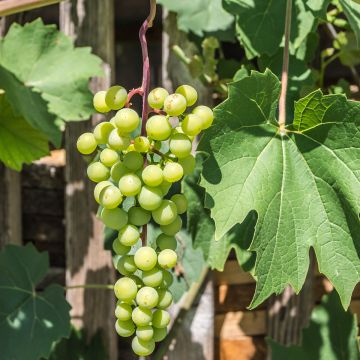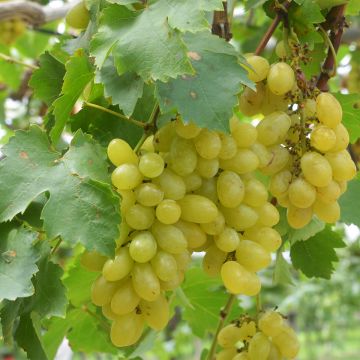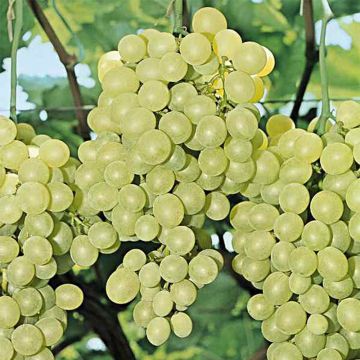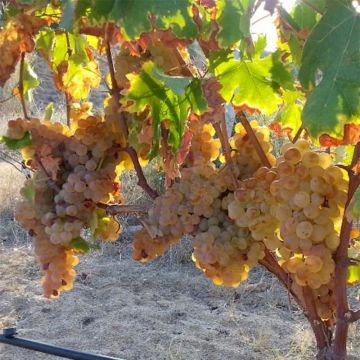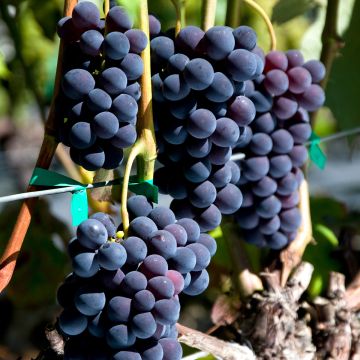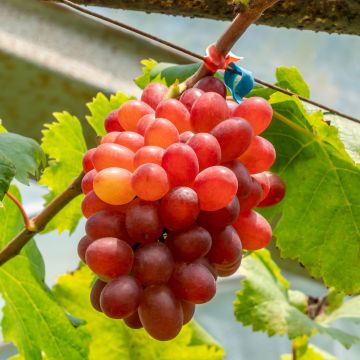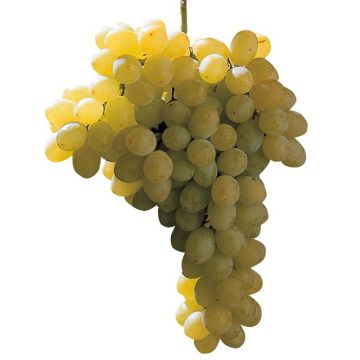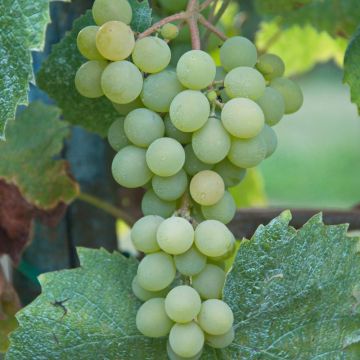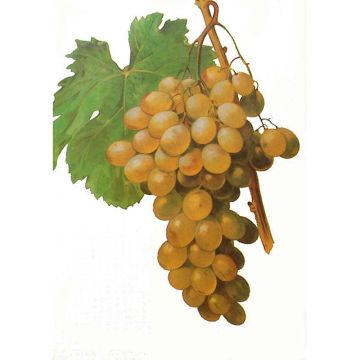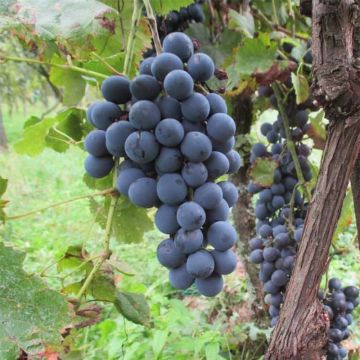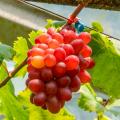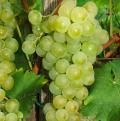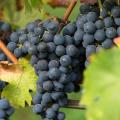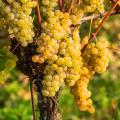Seedless grapes
Does this plant fit my garden? Set up your Plantfit profile →
Available in 1 sizes
Available in 1 sizes
Available in 1 sizes
Available in 1 sizes
Available in 1 sizes
Available in 1 sizes
Available in 1 sizes
Available in 1 sizes
Available in 1 sizes
Available in 1 sizes
Our range of apyrenus grape vines. These varieties, known as "apyrenus", are ideal for enjoying tasty fruits without the inconvenience of pips. The Perlette vine is one of the most popular, producing small, crunchy green clusters, perfect for fresh consumption. The famous ‘Sultanine’ or 'Sultanina Bianca' vine, with its golden and sweet grapes, is also highly regarded for the production of raisins. The ‘Centennial Seedless’ stands out with its golden yellow berries and excellent balance of sugar and acidity. The Himrod vine is acclaimed for its small, golden and sweet clusters, perfect for the table. The variety ‘Venus’, with its large black grapes with a slightly musky taste, is also highly appreciated for its juicy and pip-free flesh. Bearing pink fruits, the Crimson Seedless vine is known for its long shelf life and crunchiness. Explore also the ‘Aperina Nera’ vine which produces juicy and sweet black grapes clusters without pips. Suitable for temperate climates, it is ideal for fresh consumption.
Seedless grapes exist in nature: they are Corinthian grapes. They have been crossed with classic varieties to obtain sterile cultivars that have few, if any, pips.
Grape vines thrive in full sun, in well-drained, light, and chalky soil. They require regular pruning to stimulate fruit production.
For further information, also check out our "Grapevine: planting, cultivation, pruning" dossier
Haven't found what you were looking for?

































